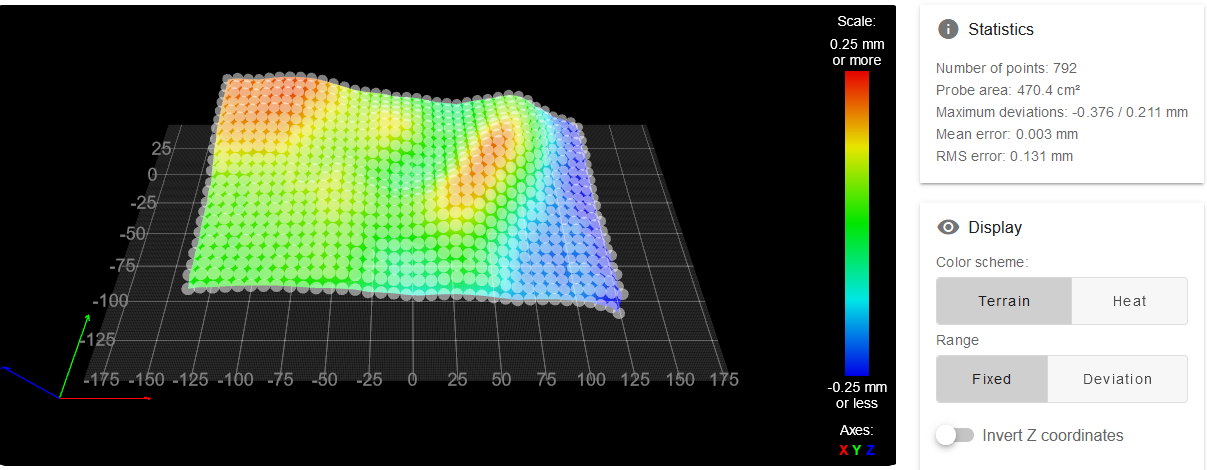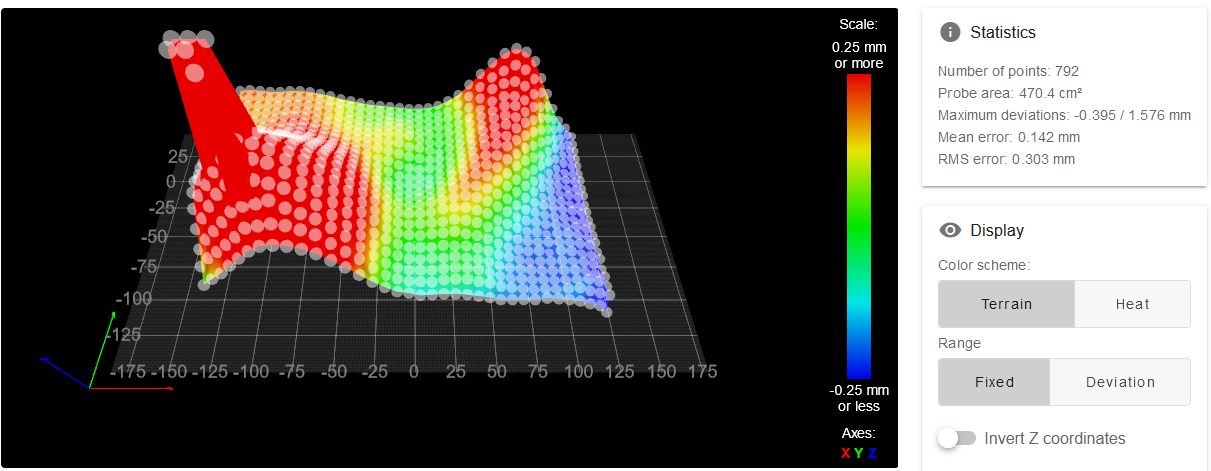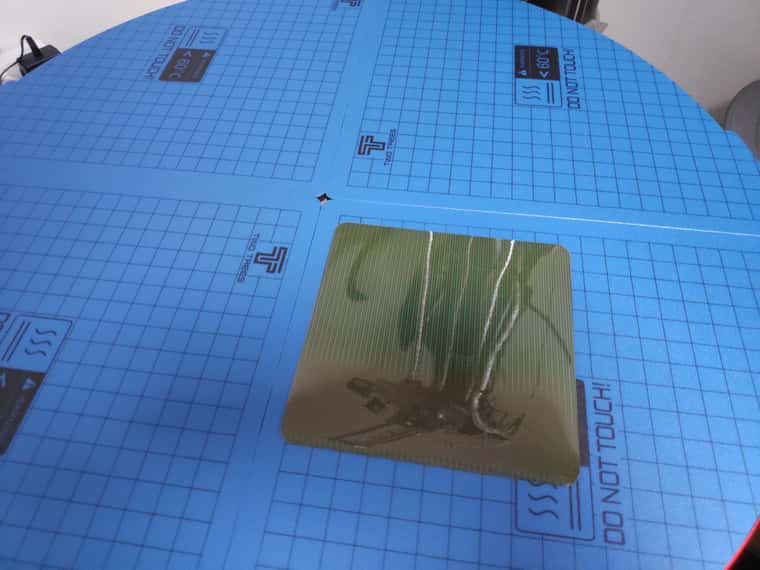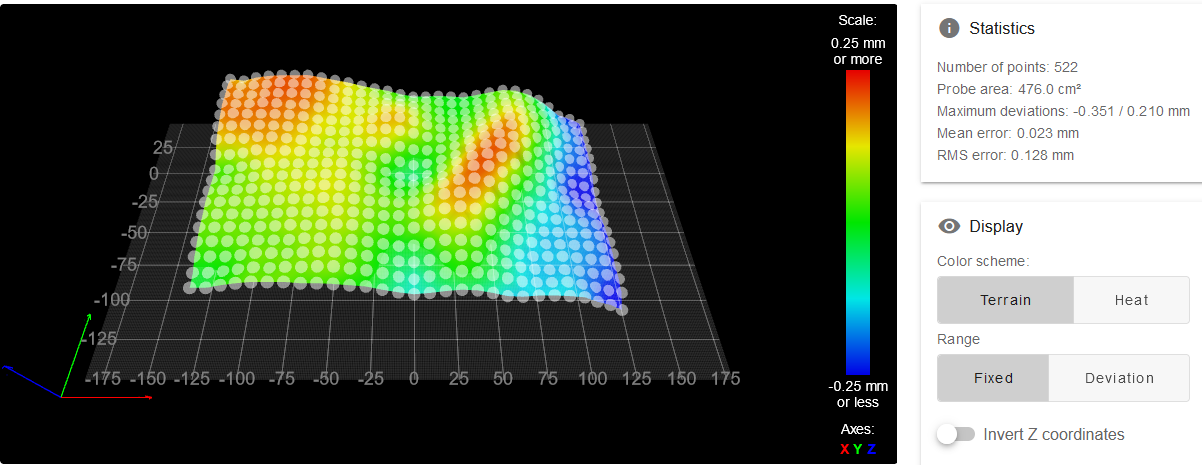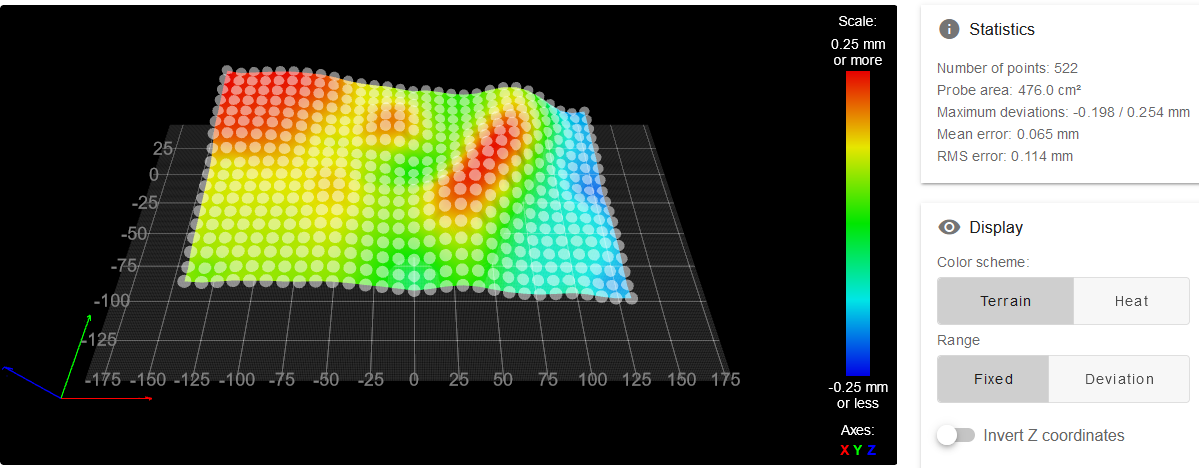Scanning Z probe support in RRF 3.5
-
@CNCModeller I am using the probe with a flexible magnetic sheet. I was expecting the magnets underneath it to show up in the height map, but they don't. However, the instructions for the Beacon probe say you need to avoid strong magnets.
-
@dc42 said in Scanning Z probe support in RRF 3.5:
@CNCModeller I am using the probe with a flexible magnetic sheet. I was expecting the magnets underneath it to show up in the height map, but they don't. However, the instructions for the Beacon probe say you need to avoid strong magnets.
@dc42 In your experience, does the height map reference to the magnetic sheet surface or the underlying metal bed?
-
@CNCModeller I can's say because I don't use one without the other. However, the fact that the probe doesn't see the magnets suggests to me that it is sensing the sheet.
For reference I am using this bed https://mandalaroseworks.com/products/magbed-for-e3d-toolchanger and this sheet https://whambam3d.com/collections/build-surfaces/products/flexi-plate-with-pre-installed-pex-build-surface?variant=39372386566242.
-
@dc42 I'm using the type that looks like flexible rubber fridge magnets so we'll see how that compares. The flux is in long lines spaced at about 10mm pitch.
-
That mandalaroseworks bed does have pretty darn strong magnets in it!
@dc42 why not do a bed scan without the flex sheet installed just for comparison.
-
@T3P3Tony OK, here it is.
-
@dc42 cool, you can clearly see the magnets!
One other interesting test would be to put a thin shim in the middle under the flexi build plate (say a couple of M4 washers and see how accurately it picks up the deformation of the flex plate.
-
-
-
@dc42 definitively confirms its picking up the flex plate and not the underlying bed/magnets
-
This is what the field lines on the magnetic build plate I'm using looks like, zoom into the magnetic detection film.
It's stuck to a 4mm thick mirror on top of a 4mm thick aluminium plate which has the 250v heater pad on the back of it.
It'll be interesting to see if the AC bed makes a difference when it's on. I guess I should be able to turn it off for the scan once the bed is up to temperature.
I'm assuming the inductive probe will pick up on the mirror coating if it doesn't interact with the rubberised magnetic build sheet.
It'll be a while before I can test this as I've got a lot on at the moment but everything is in hand to give it a try.
For the record very impressed on how quickly this has been done, as always the Duet3D team is top banana


All the best
Barry M -
@dc42 These stronger magnetic sheets have alternating magnet orientation. (just mentioning it, not everyone knows)
It probably depends if you scan along the magnet lines or cross them. -
... and even when in line with the field lines the pitch of the scan might need to be the same as or multiples of the pitch of the field lines. And that assumes every field line is the same strength.
Will be an interesting experiment none the less...
-
@CNCModeller I don't think the static magnetic field should affect the sensor significantly, because it's unlikely to cause magnetic saturation.
-
I've made some further improvements to the scanning probe software:
- Previously I was fitting the sensor frequency vs. height calibration points to a quadratic curve. When I plotted the residual in a spreadsheet I saw that there was a small cubic residual error. Now I fit a cubic curve to the points instead.
- I hadn't noticed that during calibration, when the sensor got close to the bed it returned an amplitude error, which affected the calibration. I have increased the oscillation amplitude to fix this.
Here is a 522 point height map produced by the scanning sensor in 21 seconds, including the time taken to do a regular probe at bed centre (to establish an accurate Z=0 datum) and then calibrate the scanning probe:
Here is a height map of the same bed produced using the microswitch probe in 5 min 28 seconds (I reduced the dive height to 2mm to speed up probing):
There's not much difference between them, except for a 0.04mm offset that I need to track down.
-
@dc42 when you did that, was the bed warm or are you still playing around with it when it’s cold?
-
@samlogan87 it's still cold. I'll try heating the bed to 80C next.
-
@dc42 said in Scanning Z probe support in RRF 3.5:
There's not much difference between them
The max. deviation numbers have a huge difference:
-0.351 vs -0.198
That's almost a layer thickness, or am I wrong? -
@dc42 cool. It is looking very promising though. Awesome work. I have a 400x400mm bed and always have issues with bed flatness especially when you really heat it up to do nylons etc
-
@o_lampe said in Scanning Z probe support in RRF 3.5:
The max. deviation numbers have a huge difference:
-0.351 vs -0.198
That's almost a layer thickness, or am I wrong?Those most negative height error values are in the mid right hand edge of the map. 0.04mm of the difference is accounted for by the offset between the height maps. I think the remainder is caused by the bed magnet at that position. It's now clear to me that the six bed magnets are causing slight dips in the height map produced by the scanning probe. This is especially clear along the left hand edge.

